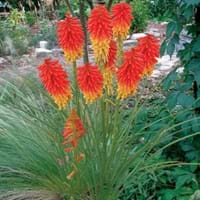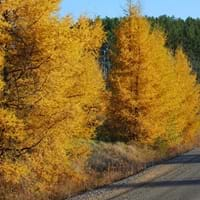Life Span
Perennial
Perennial
Type
Perennial
Needled or Scaled Evergreen
Origin
Hybrid origin
North America, North-Central United States, Western United States, Canada
Types
Not Available
Not Available
Habitat
Damp Places, Marshy ground
Cold Regions, gardens, Open areas
USDA Hardiness Zone
6-9
1-4
Sunset Zone
2a, 2b, 3a, 3b, 4, 5, 6, 7, 8, 9, 14, 15, 16, 17, 18, 19, 20, 21, 22, 23, 24
A1, A2, A3, 1a, 1b, 2a
Habit
Clump-Forming
Pyramidal
Flower Color
Yellow, Red, Orange, Pink
Yellow
Flower Color Modifier
Bicolor
Bicolor
Fruit Color
Not Available
Not Available
Leaf Color in Spring
Green, Blue Green
Light Green, Blue Green
Leaf Color in Summer
Green, Blue Green
Light Green, Blue Green
Leaf Color in Fall
Blue Green, Gray Green, Light Yellow
Yellow, Gold
Leaf Color in Winter
Light Green
Not Available
Leaf Shape
Linear
Needle like
Plant Season
Spring, Summer
Spring, Summer, Fall, Winter
Sunlight
Full Sun, Partial Sun
Full Sun
Type of Soil
Clay, Loam, Sand
Clay, Loam, Sand
The pH of Soil
Acidic, Neutral
Acidic, Neutral
Soil Drainage
Well drained
Average
Bloom Time
Early Summer, Summer
Fall, Spring
Tolerances
Drought
Drought
Where to Plant?
Container, Ground
Container, Ground
How to Plant?
Divison, Seedlings
Seedlings
Plant Maintenance
Medium
Medium
Watering Requirements
Needs more water during establishment, Water Deeply, Water in morning to avoid prompting diseases, Water in the early morning hours
Average Water Needs
In Summer
Lots of watering
Lots of watering
In Spring
Moderate
Moderate
In Winter
Average Water
Average Water
Soil pH
Acidic, Neutral
Acidic, Neutral
Soil Type
Clay, Loam, Sand
Clay, Loam, Sand
Soil Drainage Capacity
Well drained
Average
Sun Exposure
Full Sun, Partial Sun
Full Sun
Pruning
Cut or pinch the stems, Remove damaged leaves, Remove dead branches, Remove dead leaves
No pruning needed in the early stages, Remove damaged leaves, Remove dead branches, Remove dead leaves
Fertilizers
All-Purpose Liquid Fertilizer, Apply N-P-K
All-Purpose Liquid Fertilizer
Pests and Diseases
Onion thrips, Red blotch, Root rot
Aphids, Birds, Red blotch
Plant Tolerance
Drought, Moisture
Cold climate, Drought
Flower Petal Number
Single
Single
Foliage Texture
Coarse
Fine
Foliage Sheen
Matte
Glossy
Attracts
Snails
Aphids, Birds
Allergy
Not Available
Not Available
Aesthetic Uses
Borders, Cottage Garden, Ground Cover
Showy Purposes
Beauty Benefits
Not Available
Not Available
Environmental Uses
Air purification
Air purification
Medicinal Uses
Not Available
Boils, Cold, Frostbite, hemorrhoids
Part of Plant Used
Not Available
Bark, Leaves
Other Uses
Not Available
Used as firewood, Used for its medicinal properties
Used As Indoor Plant
No
No
Used As Outdoor Plant
Yes
Yes
Garden Design
Container, Cutflower, Mixed Border, Rock Garden, Wall
Bog Garden, Feature Plant, Screening, Wind Break
Botanical Name
KNIPHOFIA 'Border Ballet'
LARIX laricina
Common Name
Tritoma, Wisley Blue Spring Starflower, Wisley Blue Springstar
Tamarack
In German
Tritoma
tamarack
In French
Tritoma
tamarack
In Spanish
tritoma
tamarack
In Greek
tritoma
Tamarack
In Portuguese
Tritoma
Tamarack
In Polish
Tritoma
Tamarack
In Latin
Trytoma
Tamarack
Phylum
Tracheophyta
Coniferophyta
Class
Magnoliopsida
Pinopsida
Order
Asparagales
Pinales
Family
Liliaceae
Pinaceae
Clade
Angiosperms, Monocots
Not Available
Tribe
Not Available
Not Available
Subfamily
Not Available
Not Available
Number of Species
Not Available
Difference Between Tritoma and Tamarack
If you are confused whether Tritoma or Tamarack are same, here are some features about those plants to help you choose better. Many people think that these two plants have the same characteristics, but one can see Tritoma and Tamarack Information and learn more about it. Fertilizers required for proper growth of Tritoma are All-Purpose Liquid Fertilizer and Apply N-P-K, whereas for Tamarack fertilizers required are All-Purpose Liquid Fertilizer. Hence, one should know the basic difference between Tritoma and Tamarack if you are planning to have them in your garden to enhance its beauty.
<
Flowering PlantsImportance of Tritoma and Tamarack
Want to have the most appropriate plant for your garden? You might want to know the importance of Tritoma and Tamarack. Basically, these two plants vary in many aspects. Compare Tritoma and Tamarack as they differ in many characteristics such as their life, care, benefits, facts, etc. Every gardener must at least have the slightest clue about the plants he wants to plant in his garden. Compare their benefits, which differ in many ways like facts and uses. The medicinal use of Tritoma is Not Available whereas of Tamarack is Boils, Cold, Frostbite and hemorrhoids. Tritoma has beauty benefits as follows: Not Available while Tamarack has beauty benefits as follows: Not Available.
Compare Facts of Tritoma vs Tamarack
How to choose the best garden plant for your garden depending upon its facts? Here garden plant comparison will help you to solve this query. Compare the facts of Tritoma vs Tamarack and know which one to choose. As garden plants have benefits and other uses, allergy is also a major drawback of plants for some people. Allergic reactions of Tritoma are Not Available whereas of Tamarack have Not Available respectively. Having a fruit bearing plant in your garden can be a plus point of your garden. Tritoma has no showy fruits and Tamarack has no showy fruits. Also Tritoma is flowering and Tamarack is flowering. You can compare Tritoma and Tamarack facts and facts of other plants too.





